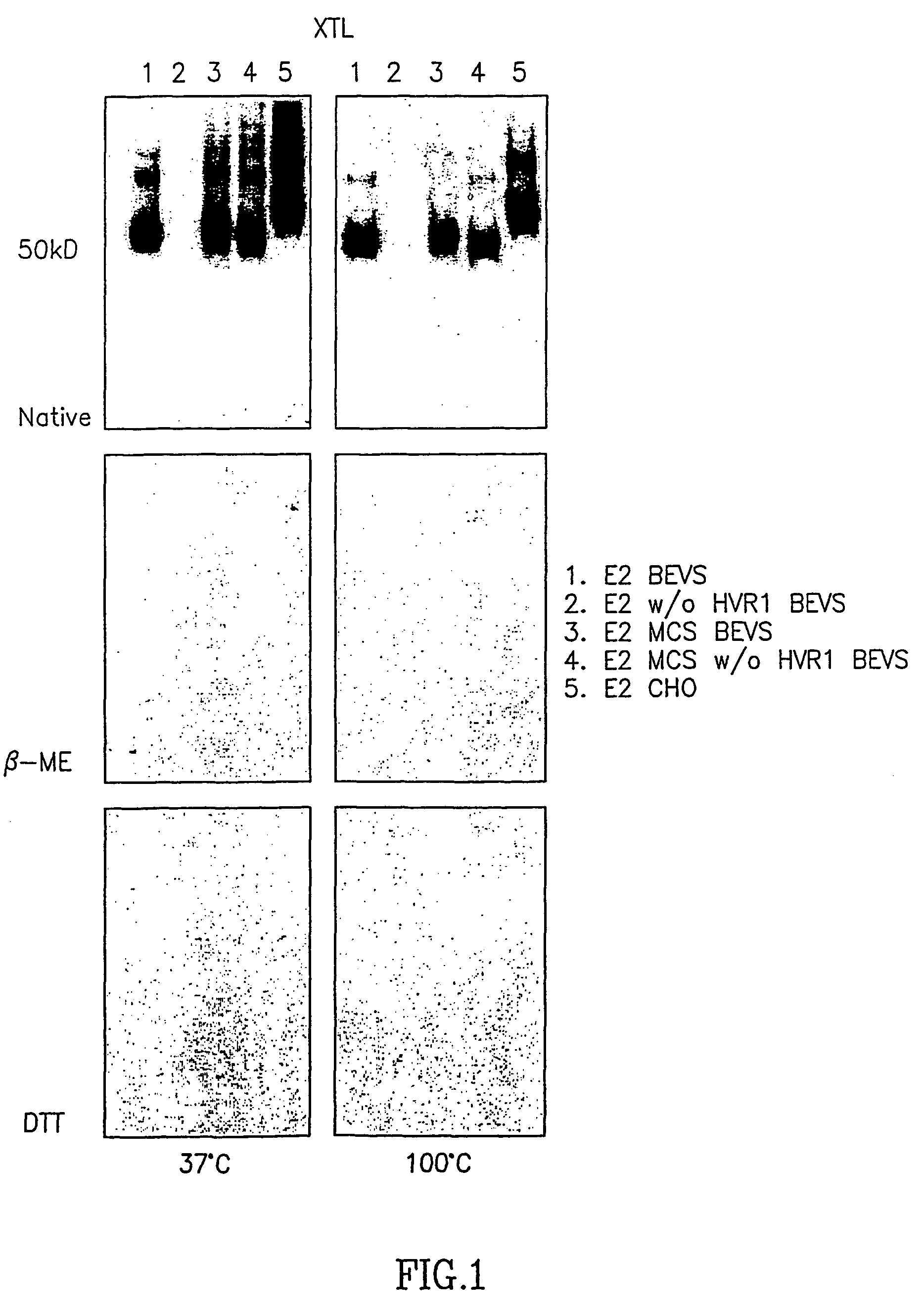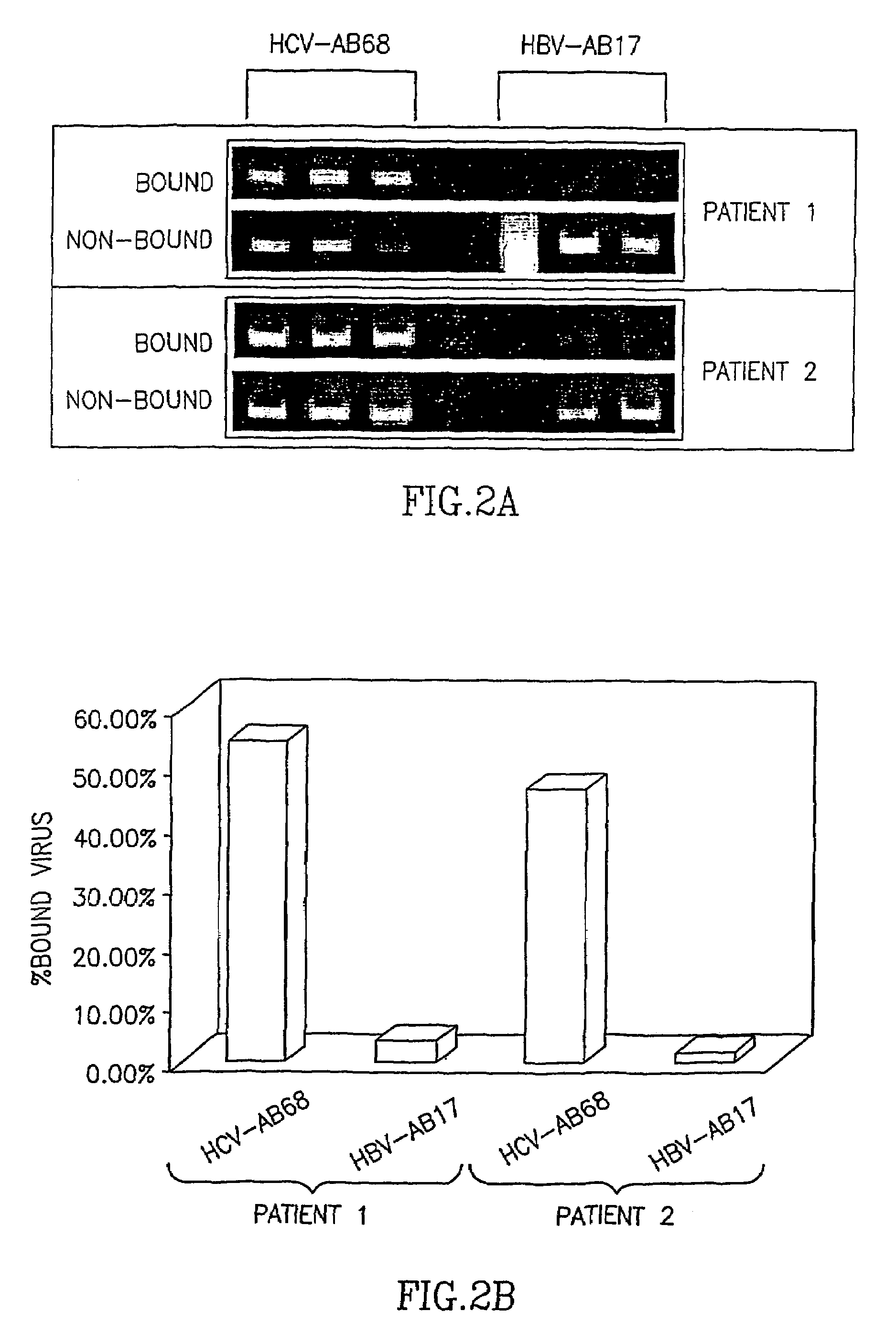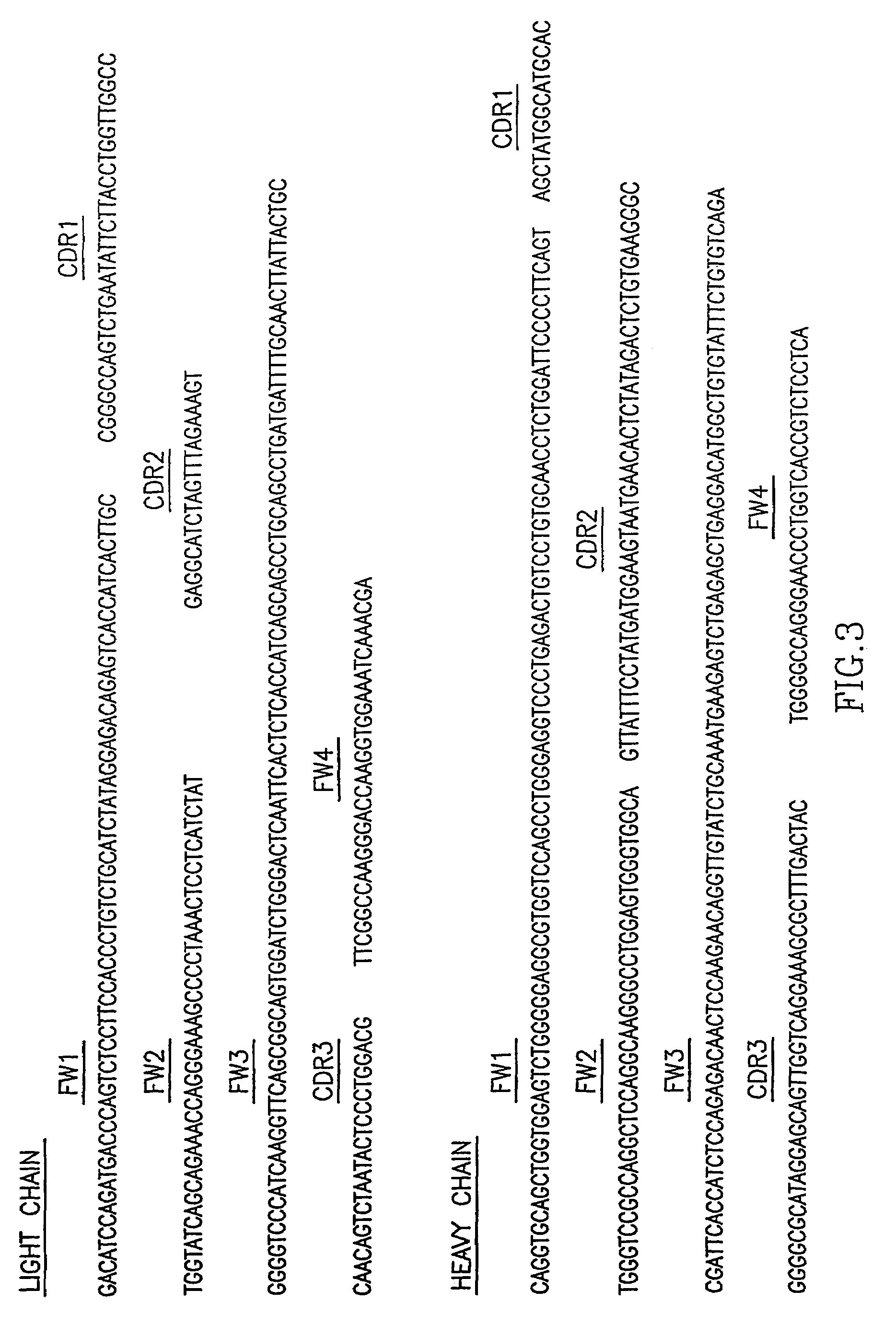Human monoclonal antibody against hepatitis C virus E2 glycoprotein
a technology of hepatitis c virus and monoclonal antibody, which is applied in the field of hybrid cell lines, can solve the problems of a major worldwide health problem affecting the infection of hcv, and achieve the effect of reducing the number of circulating viral particles in an individual and reducing the symptoms
- Summary
- Abstract
- Description
- Claims
- Application Information
AI Technical Summary
Benefits of technology
Problems solved by technology
Method used
Image
Examples
example 1
[0050]Peripheral blood mononuclear cells (PBMC) from human donors positive for anti HCV antibodies were obtained and transformed in vitro with EBV as described above. The cells were than fused with a human mouse heteromyeloma to form hybridoma cell lines. One of the stable hybridoma clones secreting specific human anti HCV E1 / E2 antibodies designated HCV-AB 68 was further characterized. The antibodies secreted by the above clone were found to be IgG1. The affinity constant of HCV-AB 68 to E2 CHO was shown to be 1.4×10−11±0.3, and to E2 BEVS 1.7×10−9±1. Specificity was tested by Western Blot analysis and by ELISA. In Western Blot HCV-AB 68 binds different E2 constructs expressed both in a baculovirus expression system (BEVS) and in a mammalian expression system (CHO cells). FIG. 1 demonstrates that HCV-AB 68 binds to all E2 constructs except for construct no. 2, i.e. E2 protein without the HVR1 region. The antibody does not bind to E2 in the presence of β mercaptoethanol or DTT. Thes...
example 2
[0053]The HCV-AB 68 antibodies were used to capture HCV particles from the blood of HCV infected patients by immuno magnetic separation (IMS) as described in materials and methods. Two patients were tested in individual experiments where each experiment was performed in triplicate. The HCV genotype of patient 1 is 1b while the genotype of patient 2 is 1a / 1b. Each serum has an HCV titer of 1–5×106. FIG. 2 shows that the fraction bound by HCV-AB68 is significantly larger then the fraction bound by the control HBV-AB17. HCV-AB68 can bind more than 50% of the viral particles, while the control HBV-AB17 background binding is between 1–5% (FIG. 2B).
example 3
[0054]The genes encoding the variable regions of HCV-AB 68 were isolated, fully sequenced and subgroups and complementarity determining regions (CDRs) were determined. The antibody has a fully human Ig gene sequence as determined by alignment to Genebank sequences and Kabat protein sequences. FIG. 3 shows the nucleotide sequence of the cDNA encoding the heavy chain and the light chain of the variable region of HCV-AB 68 (Sequence identification numbers 1 and 2 respectively). FIG. 4 shows the corresponding amino acid sequence (Sequence identification numbers 4 and 3 respectively).
[0055]The sequencing data revealed that the variable region of HCV-AB 68 consists of the subgroups VH3 JH4 VK1 JK1.
PUM
| Property | Measurement | Unit |
|---|---|---|
| Antimicrobial properties | aaaaa | aaaaa |
Abstract
Description
Claims
Application Information
 Login to View More
Login to View More - R&D
- Intellectual Property
- Life Sciences
- Materials
- Tech Scout
- Unparalleled Data Quality
- Higher Quality Content
- 60% Fewer Hallucinations
Browse by: Latest US Patents, China's latest patents, Technical Efficacy Thesaurus, Application Domain, Technology Topic, Popular Technical Reports.
© 2025 PatSnap. All rights reserved.Legal|Privacy policy|Modern Slavery Act Transparency Statement|Sitemap|About US| Contact US: help@patsnap.com



